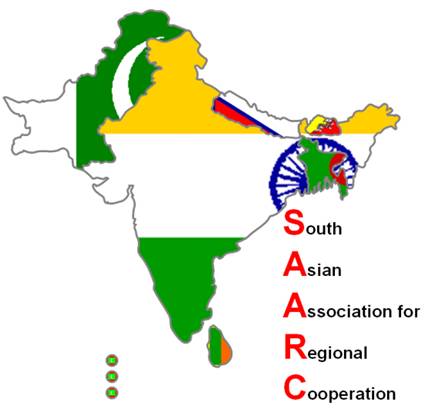Case study of a multilateral preferential trade agreement

 A
multilateral preferential agreement has been established between a
number of countries in South Asia. India, Pakistan, Nepal, Sri Lanka,
Bangladesh, Bhutan and the Maldives. were the original members of the
South Asian Association for Regional Cooperation (SAARC). They signed
the SAARC Preferential Trading Arrangement (SAPTA) in 1993, with the
intention that member states promote and sustain mutual trade and
economic cooperation within the region through the exchange of
concessions in terms of reductions in trade barriers.
A
multilateral preferential agreement has been established between a
number of countries in South Asia. India, Pakistan, Nepal, Sri Lanka,
Bangladesh, Bhutan and the Maldives. were the original members of the
South Asian Association for Regional Cooperation (SAARC). They signed
the SAARC Preferential Trading Arrangement (SAPTA) in 1993, with the
intention that member states promote and sustain mutual trade and
economic cooperation within the region through the exchange of
concessions in terms of reductions in trade barriers.
This preferential trade agreement was the a central element of the next stage of integration that took place in January 2004, when the member of SAPTA signed the Agreement on South Asian Free Trade Area (SAFTA), creating a free trade area of 1.6 billion people.
One of the questions that is often asked about such forms of economic integration, is the extent to which such agreements yield the benefits to the member states that they were originally intended. There have been a number of studies looking at the welfare and development gains from such agreements. In the case of SAFTA, the impact is subject to debate and reports have highlighted a number of barriers to the successful operation of the agreement and free trade area. Unresolved political tensions in the region such as the conflict between India and Pakistan, and the lack of inclusion of the most commonly traded goods within the agreement are both thought likely to impede the agreement's progress
There is some thought that whilst India may make gains from such an arrangement the smaller and poorer countries in the region may lose out in terms of trade flows, efficiency, and wellbeing. Several countries are responding by resorting to alternative means of trade liberalization. Establishing bilateral preferential trade agreements, such as that agreed between India and Nepal, may represent a more effective route to economic improvement and faster development. At best, it is argued that gains attributable to SAFTA will be small or non-existent for the region. At worst, SAFTA may result in trade diversion and leave some of the poorer countries worse off.

For those that are interested you can follow the link below and look at the terms of the agreement that established the SAFTA free trade area and examine what it intended to achieve.